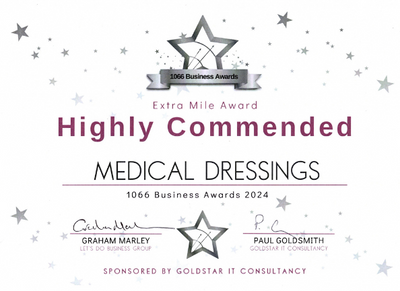19th Feb 2019
Compression therapy continues to be the cornerstone of conservative treatment. Consistent compression therapy is reported to improve ulcer healing rates, reduce incidence of recurrence, and prolong the time to first recurrence. Between 50% and 60% of patients heal with compression therapy alone during a six-month period. Determining a treatment regimen will be driven by many factors: age, overall health and medical history, severity of disease, signs and symptoms, tolerance for treatments, and the patient's preference.
- Intermittent pneumatic compression (IPC) – a mechanical method of delivering compression therapy using an air pump to inflate and deflate an airtight bag wrapped around the leg
- Compression bandages – short stretch, long stretch, multilayer
- Compression stockings
- Debridement methods
- Medications – aspirin, pentoxifylline, diuretics, anticoagulation therapy
- Ultrasound therapy
Venous Ulcer Management
There are various basic treatment strategies recommended for patients with chronic venous insufficiency. Chronic venous insufficiency is more likely to be treatable in the early stages. The goals of these strategies are to prevent pooling of blood and thereby to prevent venous ulcers.
Venous leg ulcer management strategies include:
- Maintain a healthy weight.
- Wear compression as ordered by your physician.
- Elevate legs above the heart.
- Avoid crossing your legs.
- Limit salt intake.
- Increase activity.
- Avoid long periods of time standing or sitting.
- Avoid tight clothing and high heels.
- Moisturize skin.
- Stop smoking.
- Practice good skin hygiene.
Compliance
The primary cause of venous ulcer recurrence is non-compliance. Non-compliance has been reported to result from a combination of reasons and continues to be a problem in managing venous leg ulcer management and recurrence. Data show the wide range of reasons and concerns for non-compliance in patients with chronic venous insufficiency.
Common reasons for patient non-compliance include the following:
- Physical or lifestyle restriction imposed by daily wear of compression garments.
- Poor education or communication delivered by physician or clinician. However, it has been shown that patient education is unlikely to be of benefit in this subset.
- Hot weather.
- Pain and tightness.
- Work-related issues.
- Inability to apply compression garment.
- Cost.
- Cosmetic issues.
- Lack of discipline.
- Ineffectiveness.
Conclusion
Venous ulcer management is designed to heal most ulcers, but gaps in education and compliance hinder this goal set. Patients need not only to be educated, but also to be frequently monitored in an effort to provide consistent venous ulcer management. However, this is not always possible. Compression therapy, debridement, topical agents, absorbent dressings, cellular therapies, and surgery are all part of the wound healing regimen for venous ulcer management.



